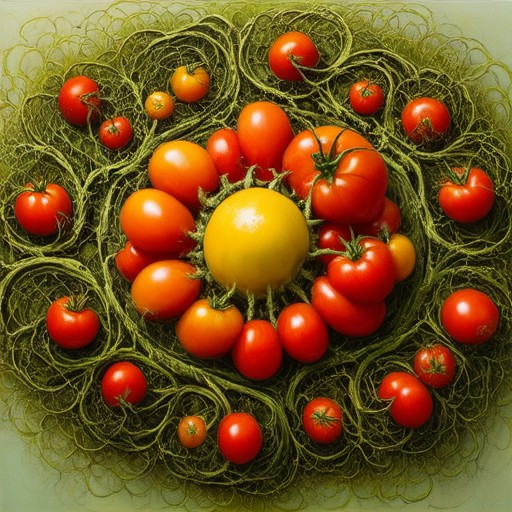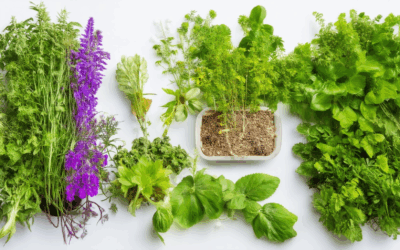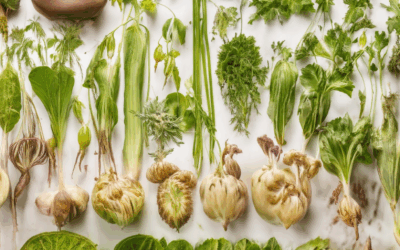Preserving heirloom tomatoes and seeds is a vital step in ensuring the continuation of unique and diverse plant varieties for future growing seasons. For many gardeners and food enthusiasts, the process of preserving heirloom tomatoes involves both tradition and innovation, allowing us to maintain the integrity of generations-old crop lines. Whether through canning, drying, or seed-saving techniques, the effort to preserve these treasures is not just about sustenance—it’s about safeguarding biodiversity and ensuring that future generations can enjoy the same rich flavors and resilience that these heirloom varieties offer. This guide delves into the practical methods for preserving heirloom tomatoes, seeds, and other heirloom plants, providing actionable steps to ensure your harvest lasts well beyond the current season.
Key Takeaways
– Preserve Heirloom Seeds: Effectively clean, dry, and store seeds for long-term viability.
– Maintain Genetic Diversity: Protect unique traits through proper preservation methods.
– Ensure Longevity: Extend seed lifespan using silica gel, rice, or freezing techniques.
– Sustainable Gardening Practices: Contribute to eco-friendly farming by saving heirlooms.
– Extend Viability: Enhance seed durability with advanced methods like cryopreservation.
– Engage in Community Efforts: Share seeds through swaps and donate to support biodiversity.
– Proper Storage Techniques: Use airtight containers and controlled environments for preservation.
– Regular Testing for Quality: Annual checks ensure seed reliability for future planting.
– Advanced Preservation Methods: Utilize seed banks and professional services for rare varieties.
– Professional Services: Consult experts for handling sensitive or rare heirloom seeds.
How to Preserve Heirloom Tomatoes for Future Growing Seasons
Preserving heirloom tomatoes allows you to enjoy their unique flavors and rich textures year-round. Here’s a comprehensive guide to help you get started:
- Fermentation : Transform tomatoes into a tangy, probiotic-rich treat through fermentation. This method adds depth and extends shelf life, ideal for those seeking a healthy twist. Follow these fermentation guidelines for optimal results.
- Freezing : Blanch tomatoes quickly and freeze them to retain their vibrant flavors. This method is straightforward and maintains freshness, though it may not significantly prolong shelf life beyond refrigeration. Check out our freezing techniques for more details.
- Canning : Use this method for long-term storage, involving boiling tomatoes with acid to eliminate bacteria. Research specific varieties to determine suitability, as not all heirlooms are ideal for canning. Refer to our canning guide for safety and success.
- Root Cellaring : Store tomatoes in a cool, dark place to slow spoilage. This gentle approach requires maintaining optimal temperature and humidity, perfect for preserving quality without extensive preparation. Learn more about root cellaring techniques.
- Drying : Convert tomatoes into leather or powder using a dehydrator for convenient cooking. While this alters texture, it offers portability for future use. Discover our drying methods for culinary applications.
Considerations :
- Timing : Preserve tomatoes at peak ripeness for optimal results. Caning may benefit from overripe tomatoes, while freezing works best when tomatoes are ripe. Plan your harvest accordingly.
- Variety Matters : Research specific heirloom varieties for recommended preservation methods; some excel in certain techniques. consult our variety guide for recommendations.
- Safety First : Follow guidelines for each method to prevent contamination and ensure edibility, especially important for canning to avoid botulism risks. Review our safety protocols .
By exploring these methods, you can choose the best fit for your needs, ensuring heirloom tomatoes thrive year after year. Whether you prefer hands-on fermentation or simple freezing, these techniques will help you preserve the bounty of your garden.
How to Preserve Heirloom Tomato Seeds
Preserving heirloom tomato seeds for future growing seasons requires careful preparation and proper storage. Here’s a step-by-step guide to ensure your seeds remain viable for years to come:
- Harvesting and Drying: Begin by allowing the harvested tomatoes to air dry in a cool, shaded area. Avoid direct sunlight, as it can cause the seeds to cook or attract pests. Ensure the tomatoes are completely dry to prevent mold growth.
- Cleaning the Seeds: Gently shake the tomatoes to remove the pulp and any excess moisture. Avoid rinsing the seeds, as this may introduce unwanted moisture. Clean seeds should be left to dry naturally.
- Drying Methods: – Using Silica Gel: Place the cleaned seeds in a paper bag with silica gel packets to absorb moisture. Seal the bag tightly and store in a cool, dark place until completely dry. – Using Rice: Toss seeds with dry rice in a paper bag to absorb moisture. Shake occasionally and let sit for several days. – Using a Dehydrator: Spread seeds evenly on trays and use a food dehydrator set to low heat. Monitor until seeds feel dry and crackle when shaken.
- Storing the Seeds: Once dried, store seeds in airtight containers, such as glass jars or labeled plastic bags. Keep containers in a cool, dark place, ideally between 35-40°F (2-5°C). Consider using a refrigerator for stable temperatures.
- Using Desiccant Packets: Add silica gel packets inside containers to further reduce humidity. Replace packets annually or as needed.
- Labeling Containers: Clearly mark each container with the seed variety name and the date of preservation for easy identification and tracking.
- Monitoring Viability: Test seeds for germination annually. If germination rates drop below expectations, consider adjusting storage conditions or methods.
By following these steps, you can successfully preserve heirloom tomato seeds for up to 10 years, ensuring they remain viable for future plantings. Proper preparation and storage are key to maintaining seed longevity and genetic integrity.
How to Preserve Heirloom Seeds for Future Growing Seasons
Preserving heirloom seeds is essential for maintaining genetic diversity and ensuring sustainable crop production. Here’s a step-by-step guide to preserving your seeds effectively:
- Cleaning the Seeds: Begin by removing any dirt or debris using a fine sieve or brush. Clean seeds ensure proper drying and prevent mold growth.
- Drying the Seeds:
- Using Silica Gel: Spread seeds evenly on a non-stick surface, such as a baking sheet lined with paper. Sprinkle a tablespoon of silica gel per cup of seeds and let dry in a cool, dark place for about two weeks.
- Using Rice: After cleaning, layer seeds between sheets of paper and cover with rice. Let them sit for 2-3 days until dry.
- Storing the Seeds: Store dried seeds in airtight containers, such as glass jars or plastic bags. Label each container with the seed variety and preservation date for easy reference.
- Freezing for Extended Viability: Once dried, place seeds in an airtight container and store in the refrigerator or freezer. This method can significantly prolong seed longevity.
- Engaging in Seed Swaps: Participate in local or online seed swaps to share and acquire new heirloom varieties, contributing to genetic diversity and learning from others.
- Donating Seeds: Consider donating seeds to seed banks or community gardens to support conservation efforts and provide access to others.
By following these methods, you can successfully preserve heirloom seeds for future growing seasons, ensuring biodiversity and sustainable gardening practices.
How to Preserve Heirloom Seeds for Future Growing Seasons
Preserving heirloom seeds is essential for maintaining genetic diversity and ensuring sustainable crop production. Here’s a step-by-step guide to preserving your seeds effectively:
- Cleaning the Seeds: Begin by removing any dirt or debris using a fine sieve or brush. Clean seeds ensure proper drying and prevent mold growth.
- Drying the Seeds:
- Using Silica Gel: Spread seeds evenly on a non-stick surface, such as a baking sheet lined with paper. Sprinkle a tablespoon of silica gel per cup of seeds and let dry in a cool, dark place for about two weeks.
- Using Rice: After cleaning, layer seeds between sheets of paper and cover with rice. Let them sit for 2-3 days until dry.
- Storing the Seeds: Store dried seeds in airtight containers, such as glass jars or plastic bags. Label each container with the seed variety and preservation date for easy reference.
- Freezing for Extended Viability: Once dried, place seeds in an airtight container and store in the refrigerator or freezer. This method can significantly prolong seed longevity.
- Engaging in Seed Swaps: Participate in local or online seed swaps to share and acquire new heirloom varieties, contributing to genetic diversity and learning from others.
- Donating Seeds: Consider donating seeds to seed banks or community gardens to support conservation efforts and provide access to others.
By following these methods, you can successfully preserve heirloom seeds for future growing seasons, ensuring biodiversity and sustainable gardening practices.
What Are the Effective Methods for Preserving Heirloom Seeds?
Preserving heirloom seeds is essential for maintaining genetic diversity and ensuring future generations can enjoy these unique varieties. Here are proven methods to effectively preserve your seeds:
- 1. Proper Drying:** Heirloom seeds require careful drying to prevent spoilage. Use silica gel or rice to absorb moisture. Ensure seeds are completely dry before storing.
- 2. Storage:** Store seeds in airtight containers, such as glass jars or plastic bags. Keep them in a cool, dry place away from humidity and pests.
- 3. Pest Control:** Inspect seeds for pests like beetles. Use pheromone traps or cold storage to eliminate infestations before drying.
- 4. Genetic Isolation:** Separate seeds by variety to maintain purity. Avoid mixing different types to prevent cross-pollination and contamination.
- 5. Regular Testing:** Test seed viability annually by sprouting a small portion. Replace any seeds that fail to germinate with fresh ones from the previous harvest.
For further resources, visit Old Seed and explore their comprehensive guides on heirloom preservation. Additionally, check out Seed Savers Exchange and Bountiful Gardens for more tips and tools.
What Are the Effective Methods for Preserving Heirloom Seeds?
Preserving heirloom seeds requires careful planning and proper techniques to ensure their viability for future growing seasons. Here are some proven methods to effectively preserve these valuable seeds:
- Storage Method 1: Proper Drying
- Storage Method 2: Refrigeration
- Storage Method 3: Seed Banks
- Storage Method 4: Cryopreservation
- Storage Method 5: Milling
Heirloom seeds thrive in dry conditions. First, clean the seeds thoroughly to remove any moisture or debris. Spread them out in a well-ventilated area, such as a shaded porch or under fans, to allow them to air dry completely. Once dried, store them in sealed, labeled containers, preferably in a cool, dark, and stable environment.
For longer-term storage, place the seeds in the refrigerator. This method slows down the germination process, extending their shelf life. Ensure the container is airtight to prevent moisture buildup, which can harm the seeds.
Consider storing seeds in a seed bank for maximum protection. These specialized facilities offer controlled environments with low humidity and temperature fluctuations, ensuring optimal seed preservation. Many organizations, like Seed Banks International , provide resources and storage options for heirloom seeds.
For the most advanced preservation technique, use cryopreservation. This method involves storing seeds in liquid nitrogen at extremely low temperatures, which can keep them viable for decades. While this is less common, it’s highly effective for rare or endangered varieties.
Mill your seeds into a fine powder before storing them. This method prevents the seeds from germinating prematurely and protects them against pests. Store the milled seeds in an airtight container, similar to the drying method.
Additionally, consider Old Seed’s comprehensive guide for more detailed steps and tips on preserving heirloom seeds. By implementing these methods, you can ensure that your heirloom seeds remain healthy and ready for planting in future growing seasons.
Remember to always check the viability of your seeds before planting to ensure successful growth. Preserving heirloom seeds is not just about safeguarding plants—it’s about protecting a piece of history and biodiversity.








0 Comments